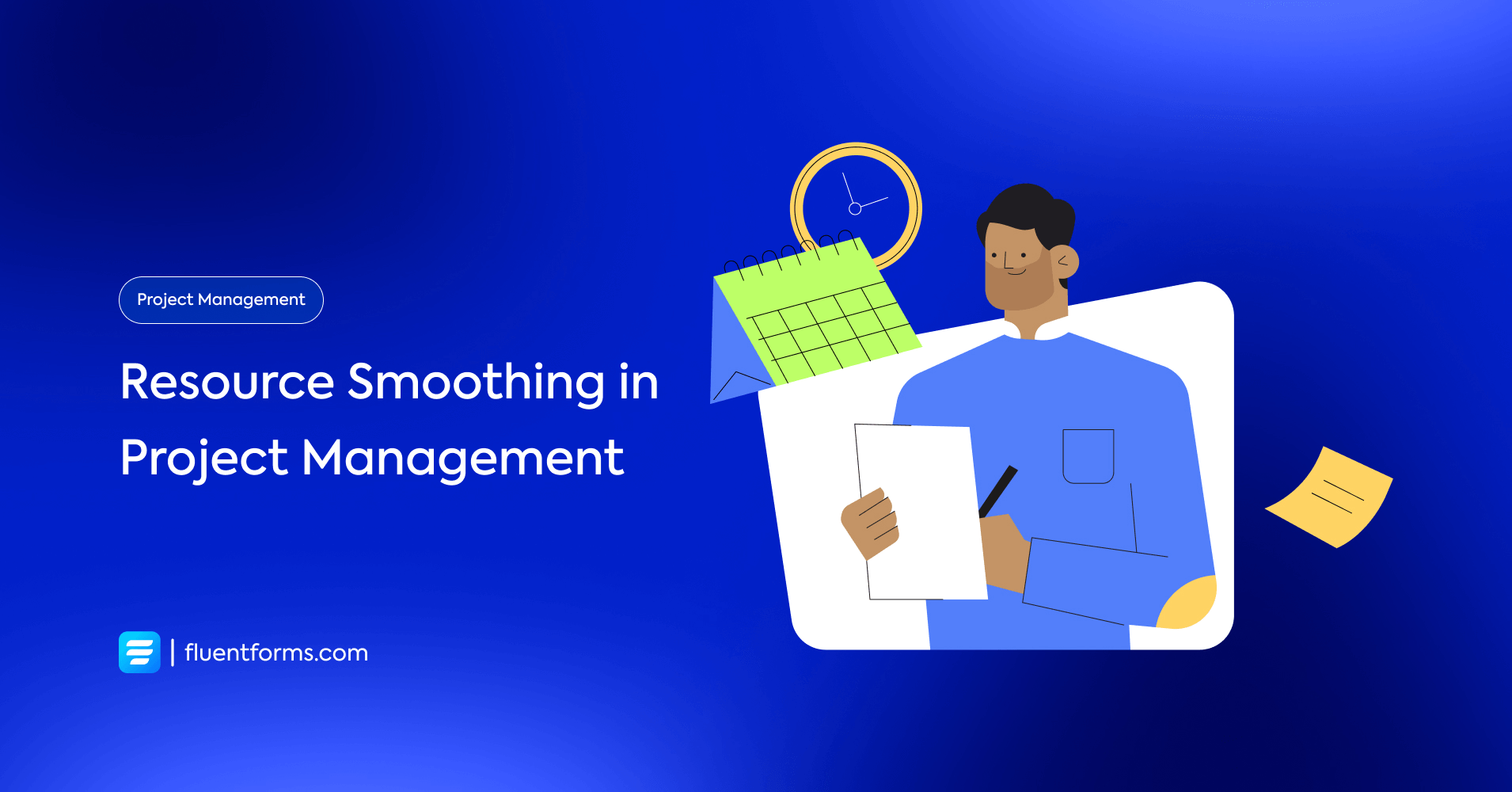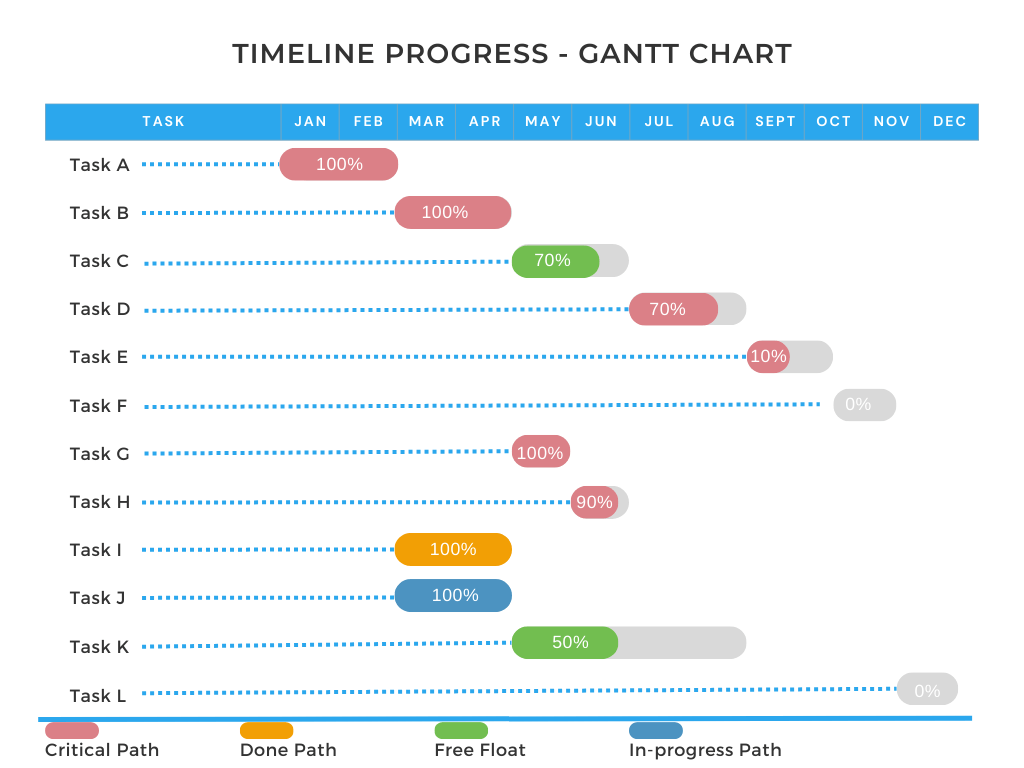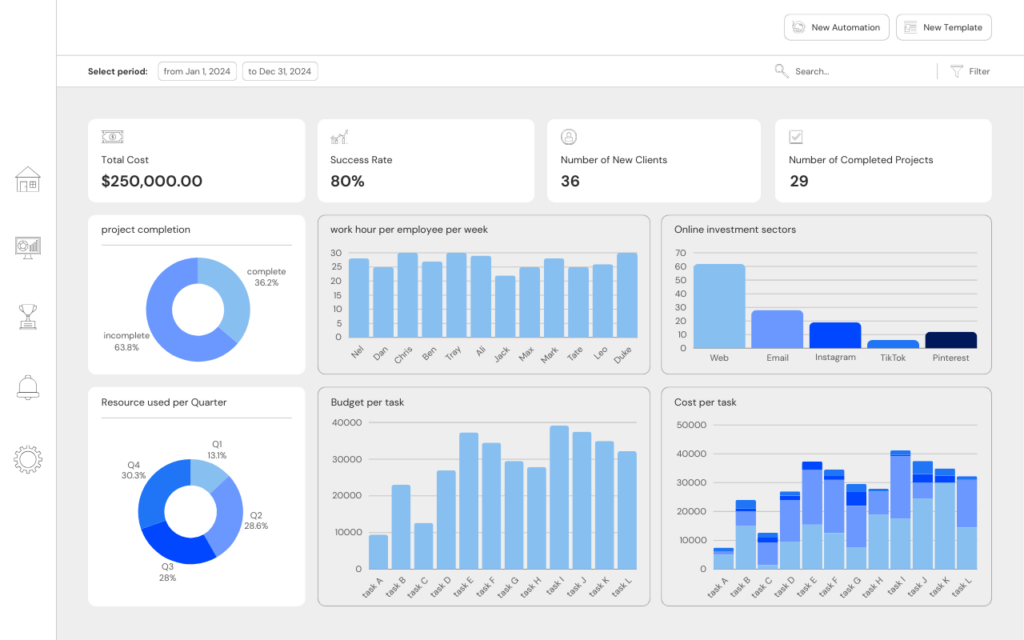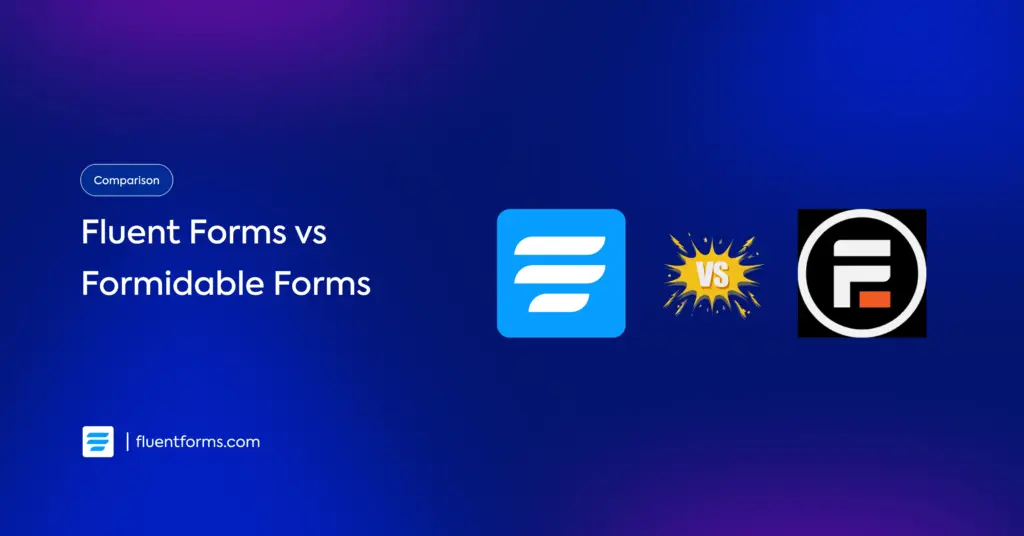Resource Smoothing in Project Management for Small Businesses

A project is usually defined by its goals, timeline, and available resources. While all these elements are quite interdependent, balancing them ensures the success of a project. You focus on each of these variables at different stages of your project. While setting practical and attainable goals comes before planning a project, resource smoothing comes at the final stage of your project management.
In the final stage, you identify all your available resources and find their most effective use to finish your project within its timeline. This very process is known as resource smoothing.
What is resource smoothing
In simple words, resource smoothing is a way to manage your resources in order to finish your project within its schedule.
When you start a project, you don’t always know the full potential of your resources. Or, sometimes, you start a project with limited resources and bring in new resources as the need arises. The workload is usually less overwhelming at this stage since the tasks are in their initial stages. You even have the luxury of slowing things down or extending the deadline of a task to some extent.
However, after the initial days of a project, you don’t have much freedom to extend the deadline any further. Extending it would cause delayed results, which can hamper your plans for your business. Moreover, when you let a project carry on for longer than planned, it exceeds your budget and takes a toll on your profit.
To prevent that, you settle on a strict deadline to finish your projects. It’s also important for building and maintaining trust with clients. And once that deadline is set and can’t be moved, you smooth out all available resources so the project ends by that time. For example, a team member assigned to one task might have an additional skill, and putting that skill into relevant action is an effective use of resources. Another example of this might be an even distribution of work hours.
In resource smoothing, you take inventory of all your resources, like skillsets, budgets, vendors, machinery, etc., and plan their most effective utilization to finish your project by its deadline.
Resource leveling vs resource smoothing
Out of the six project constraints, time, scope, and quality are directly dependent on resource, risk, and cost, respectively. For example, when you raise the scope of a project, i.e., set higher goals, higher risks also come with it. Also, when you want better quality, the cost rises accordingly.
Similarly, time and the resources of a project are interdependent. With limited resources, it takes longer to finish a project. The method of balancing these two constraints is known as resource allocation or resource optimization, and it is done in two ways. Resource leveling, or resource constrained scheduling, and resource smoothing, or time constrained scheduling.
Resource leveling is applied when the resources of a project are limited. To finish the project with limited resources, the deadline is extended.
Resource smoothing, on the other hand, applies when the project has to be finished within a limited time. All the available resources are assigned to different tasks to get the most benefit out of them and to finish the project on time.
While resource leveling is usually applied at the beginning of a project, resource smoothing takes over as things progress and a stable deadline is set.
Advantages of resource smoothing
- Ensures the timely completion of a project
- Makes sure that no resource is over or under-allocated
- Re-arranges tasks in a way that there is no gap in the timeline, which minimizes the waste of time.
Disadvantages of resource smoothing
- Sometimes new resources have to be brought in or freelancers have to be hired to finish the project on time.
- The tasks are often packed very tightly, so there’s not much scope to add any new tasks.
- The cost might increase to bring in new time-sensitive resources.
Metrics of resource smoothing
Some metrics are used to calculate or keep track of resource smoothing. Let’s get familiar with the metrics first before learning how to use them for resource smoothing.
Slack time
Slack time is the total amount of time any task can be delayed without affecting the deadline of a project. More slack time means that there’s more flexibility in the timeline of the project. It also allows readjusting the timeline if additional tasks are to be included without extending the deadline.
Free and total float
Total float indicates the total time a task can be delayed without changing the project’s deadline. It’s the same as slack.
Free float, also known as float, is the amount of time a task can be postponed without affecting the timelines of the tasks dependent on the said task.
Critical path
The critical path is the longest chain of tasks in a project and has the most number of tasks. The tasks on a critical path are called critical activities. The total time to complete a project is usually closer to the time required to finish its critical path.
Earliest start time
The earliest start time (ES) for a task is the earliest time a task or an activity can be started in a project. Unless the task is independent, the earliest start time depends on the earliest finish time of the task it depends on.
Latest start time
The latest start time (LS) is the latest a task can be started so that it doesn’t affect the deadlines of any other tasks of a project.
Earliest finish time
Earliest finish time (EF) is the earliest time an activity can be completed based on its earliest start time, duration, and the availability of resources required for the completion of the activity.
Latest finish time
The latest finish time (LF) is the latest time an activity can be completed, depending on its latest start time, duration, and the availability of resources required for the completion of the activity.
Steps of resource smoothing
Proper planning is the key to resource smoothing. Since resource smoothing applies when you want to finish your project on time, you have to keep a few things in mind. For example, you can’t take on more projects than your resources allow. If more than one client approaches you at the same time, you have to pick the one that looks better for your portfolio and is more suitable for your resources.
Again, you can’t over-engage your skills. Because overtime will most likely make you and your team members lose concentration. Therefore, your project will ultimately lose effectiveness. You also have to keep an eye on all costs and how different resources are being used.
1. Create a project schedule
This is the first stage of your project. At this stage, you simply map the outlines. Break your project into tasks and subtasks, and set an estimated timeline for each task. You can also allocate resources for the tasks at this stage.
2. Locate the critical path of your project
As mentioned before, the critical path is the longest sequence of tasks in your project. When you find the critical path, it also tells you the estimated time to finish the project. For example, the ABGHDEFL path is the critical path in this project.

3. Identify the dependencies of each task
The step that comes after finding the critical path, is finding the dependencies of each task. It includes identifying what tasks any particular task depends on or what other tasks depend on it. For example, in this image, task D depends on tasks C and H.
4. Find the free and total float of individual tasks
Once you find the task dependencies, calculating the free and total floats is pretty easy. All you have to take into account is how long a certain task can be delayed without hurting the critical path. For example, task C has the same time to complete as tasks G and H combined. Again, tasks J and K have the same timetable as tasks B, G, H, and D. Therefore, tasks that are not on the critical path usually have a more flexible schedule than the ones that are.
5. Assign members and allocate resources to tasks
This is the stage where the main resource smoothing comes in. You allocate more resources and all the necessary skills to the tasks on the critical path, while tasks that are not on the critical path and have more flexibility, can be completed with a little less amount of resources as well. You assign members to your tasks in a similar manner as well. Tasks with less flexibility require more attention and, therefore, need more members to supervise them.
6. Review at each stage
Finally, you need to review at each stage when your project starts running. You have to keep an eye open for the costs and the value you’re getting after each task, whether their standard matches your goals and the project’s scope. Also, keep in mind that you have to make optimal use of your machinery and resources. Furthermore, with each review, you’ll learn if you need to bring any additional resources for any tasks.
Tools and templates to track resource smoothing
There are several ways to keep track of resource smoothing, and all of them include close observation and supervision. The following offers very easy viewing and tracking of data.
Gantt charts
Gantt chart is the most popular way of viewing data. You can easily track how much of each task has been done. The image here is the most basic version of a Gantt chart; you can also put assigned members in the chart and keep track of the resources and costs. There are different project management tools and project management AI tools where your Gantt chart gets updated with the progress of each task.

Dashboards
Dashboard view lets you have a bird’s eye view of your project. You can view every data summary at a glance here, and when you click on a particular segment, you see the details.

Calendar view
Calendar view allows you to view and add tasks by clicking on a date on your calendar. It also updates your task status once you finish a task. Calendar view is the best option if you want to keep track of time and finish tasks within their deadline. AI calendars like Motion can even detect task dependencies, and when you reschedule one task, it automatically reschedules all its blockers.
Conclusion
Resource smoothing is nothing but using all your resources in a planned way so there is minimal waste and you can complete a project on time. It also helps keep a project within its budget and ensures a successful delivery. If you want to smartly run your projects, you should always focus on resource smoothing when the project is already in motion to achieve your goals.
Ask us if you have any queries, and don’t forget to comment on how resource smoothing helped complete your project.







Leave a Reply